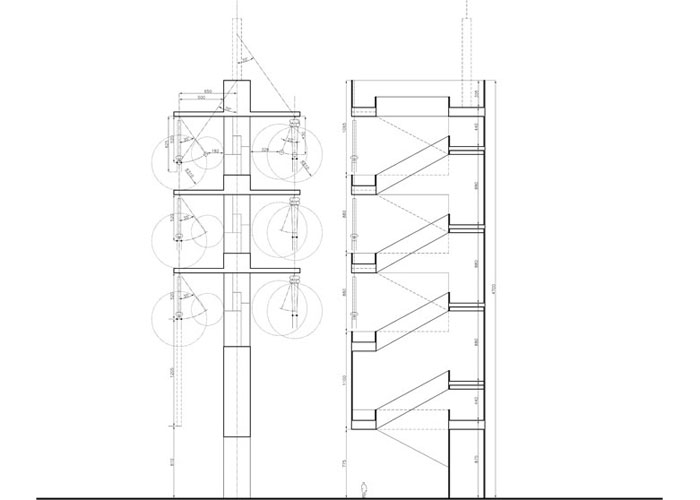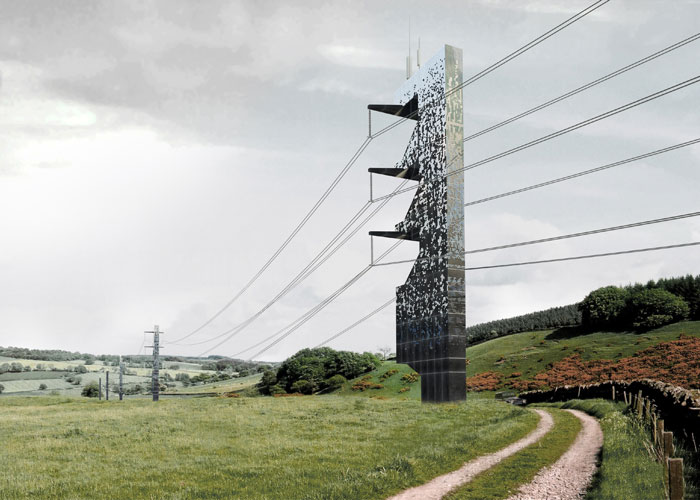Concours pour l’étude d’un pylone haute tension
a design to be identifiable, a monolith made out of a simple geometry that relate the earth to the sky drawing a new horizon line.
To design a pylon and is to seek for the relation between the object to its site.
It’s an evidence for us that to study a pylon requires to take some distance to its environment, as essentially it has to face several countrysides and different landscapes. Unless the power lines aren’t buried, a pylon in the landscape is a situation within the panorama, a position that catches one’s mind. Because of its dimension you can’t avoid to see it. What we see from distance is more of a «running fence» that prints the landscape, than an isolated object seated in a site. Our research therefore started with this observation: the idea of a fence running going through the countryside that you have to play with.
To accentuate this point of view we think the pylon can’t be perpendicular to the power lines, as it usually is. Its orientation has to come along the axes of the lines, following the transported energy, which energy is not visually interrupted to each pylon, but rather escort to make a transport more fluid and limpid. The project is a simple parallelepiped rectangle, large enough to be present, indicating a direction.
To design a pylon and is to seek for the relation between the object to its site.
It’s an evidence for us that to study a pylon requires to take some distance to its environment, as essentially it has to face several countrysides and different landscapes. Unless the power lines aren’t buried, a pylon in the landscape is a situation within the panorama, a position that catches one’s mind. Because of its dimension you can’t avoid to see it. What we see from distance is more of a «running fence» that prints the landscape, than an isolated object seated in a site. Our research therefore started with this observation: the idea of a fence running going through the countryside that you have to play with.
To accentuate this point of view we think the pylon can’t be perpendicular to the power lines, as it usually is. Its orientation has to come along the axes of the lines, following the transported energy, which energy is not visually interrupted to each pylon, but rather escort to make a transport more fluid and limpid. The project is a simple parallelepiped rectangle, large enough to be present, indicating a direction.
All images are under copyright © MMXI



